‘Behind the Walls’ installed outside UMMA
Ann Arbor welcomes a monumental icon to State Street, thanks to long-time U-M supporters J. Ira and Nicki Harris. Spanish artist Jaume Plensa created this 25-foot-tall sculpture of an elongated human head with hands covering both eyes, now permanently installed at the museum’s entrance. Share your impressions. (Click on any image to enlarge.)
-
The crane, the crane
The work of art is made of polyester resin and marble dust. Its complex installation captivated campus passers-by for hours. (Photo: Scott Soderberg, Michigan Photography.)
-
Inauspicious beginnings
‘Behind the Walls’ debuted in May 2019 at the inaugural Frieze Sculpture festival in Manhattan, where it was on view in Rockefeller Center. With the Ann Arbor stage set, the pieces came back together. (Photo: Roberta Frey Gilboe.)
-
Scattered
The work garnered international press and praise, with The New York Times calling it “the most instagrammed and photographed” work of the 2019 Frieze Sculpture festival in Manhattan. Hold on, you’ll see… (Photo: Roberta Frey Gilboe.)
-
Chin up
‘Behind the Walls’ takes the place of Mark di Suvero’s Shang, which had been on long-term loan to the Museum since 2009. Shang was purchased by a private collector and was removed in October 2020. (Photo: Roberta Frey Gilboe.)
-
Come closer
The enormous hands covering the figure’s face simultaneously block the outside world and beckon it to come closer, look harder, and think more deeply. (Photo: Roberta Frey Gilboe.)
-
Inside my head
J. Ira and Nicki Harris are active collectors of contemporary art, including outdoor sculptures. Several works by Plensa are a highlight of their collection; they have long admired the artist’s work. (Photo: Ashley Jones, SME Inspection.)
-
Iconic
“Nicki and I are thrilled to help bring ‘Behind the Walls’ to UMMA,” says J. Ira Harris. “We are captivated by Plensa’s figures, and the moment we saw this work in Rockefeller Center, we knew that its presence at U-M would spark important and powerful conversations about our global interconnectedness.” (Photo: Roberta Frey Gilboe.)
-
Walled off
“Sometimes, our hands are the biggest walls,” Jaume Plensa has said of the work. “They can cover our eyes, and we can blind ourselves to so much of what’s happening around us … To me, it’s an obsession to create a beautiful object with a message inside.” (Photo: Patrick Young, Michigan Imaging.)
-
Express yourself
“More than almost any other artist working today, Plensa’s work argues for art’s capacity to produce powerfully a sense of public place and expression — to jolt us into thought and heightened perception,” says UMMA Director Christina Olsen. (Photo: Patrick Young, Michigan Imaging.)
-
Move over, Orion
The Harrises are substantial donors to many activities at U-M, including endowing the J. Ira and Nicki Harris Family Head Football Coach position currently held by Jim Harbaugh, the lead gift for the football locker room, and gifts supporting the Stephen M. Ross School of Business, the Gerald R. Ford School of Public Policy, and the College of Literature, Science, and the Arts. Most recently, they, along with a small group of donors, helped to support the acquisition of Mark di Suvero’s Orion (pictured here) for UMMA’s permanent collection. (Photo: Patrick Young, Michigan Imaging.)

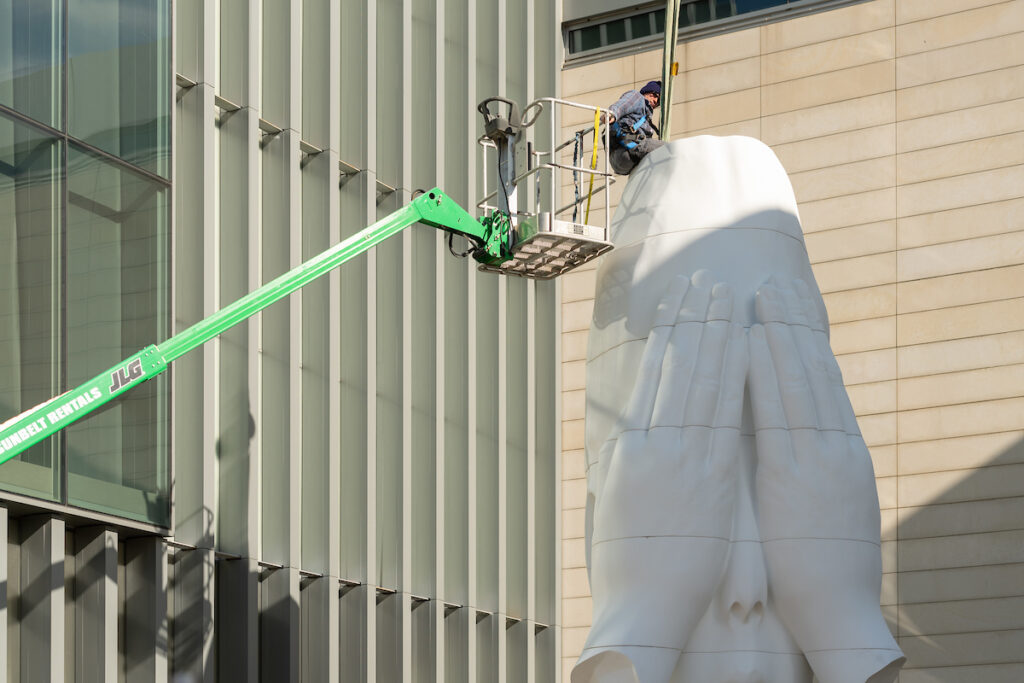
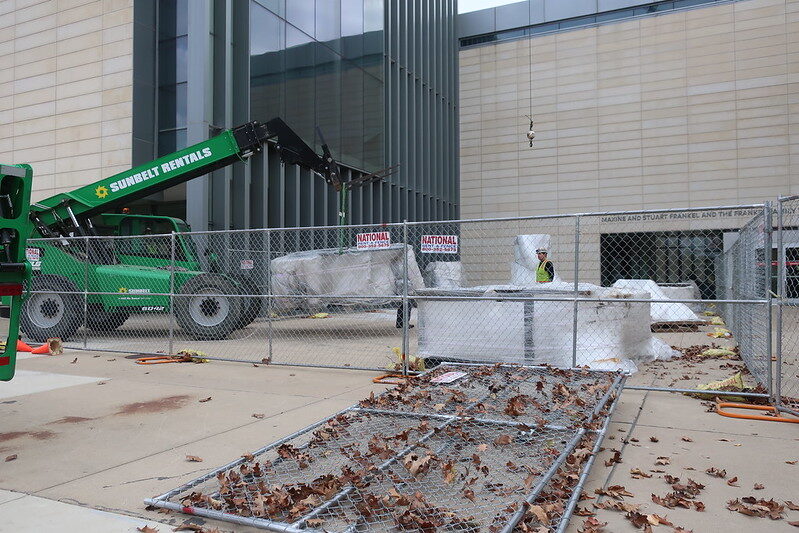
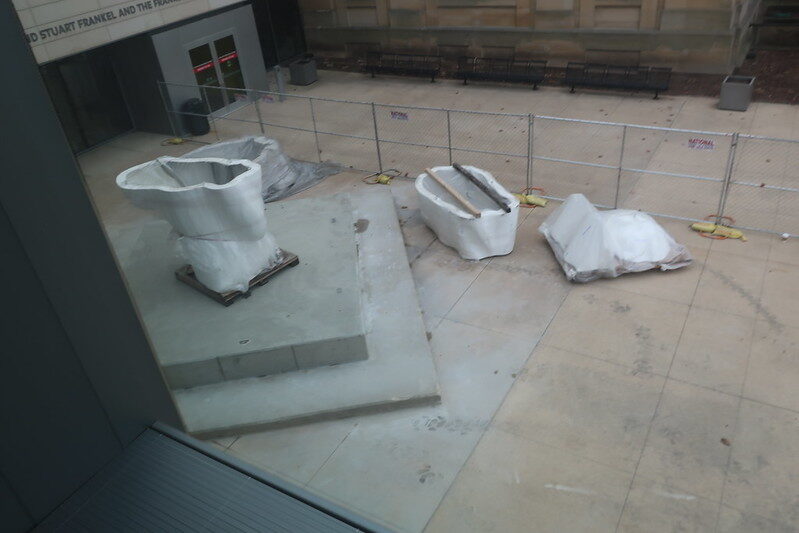
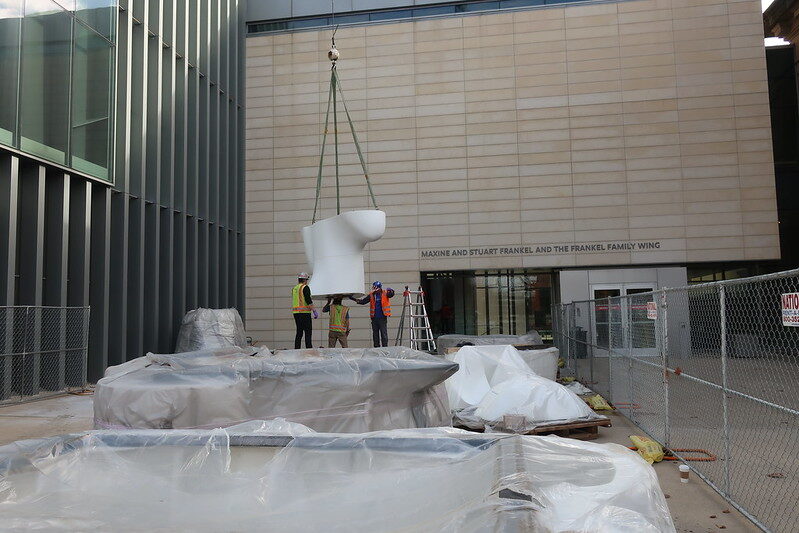
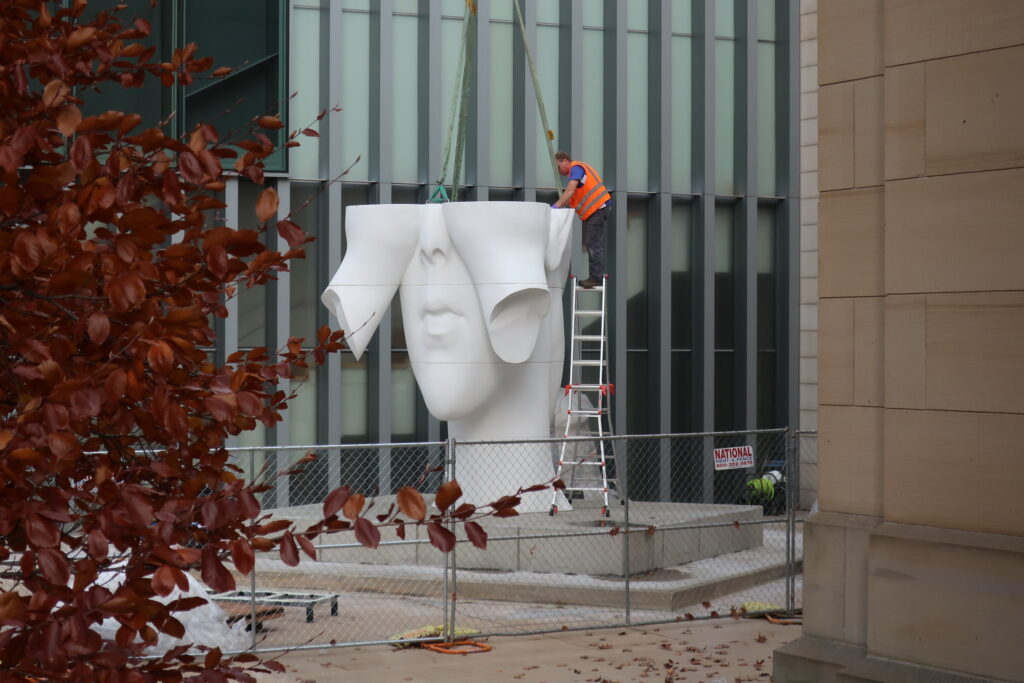
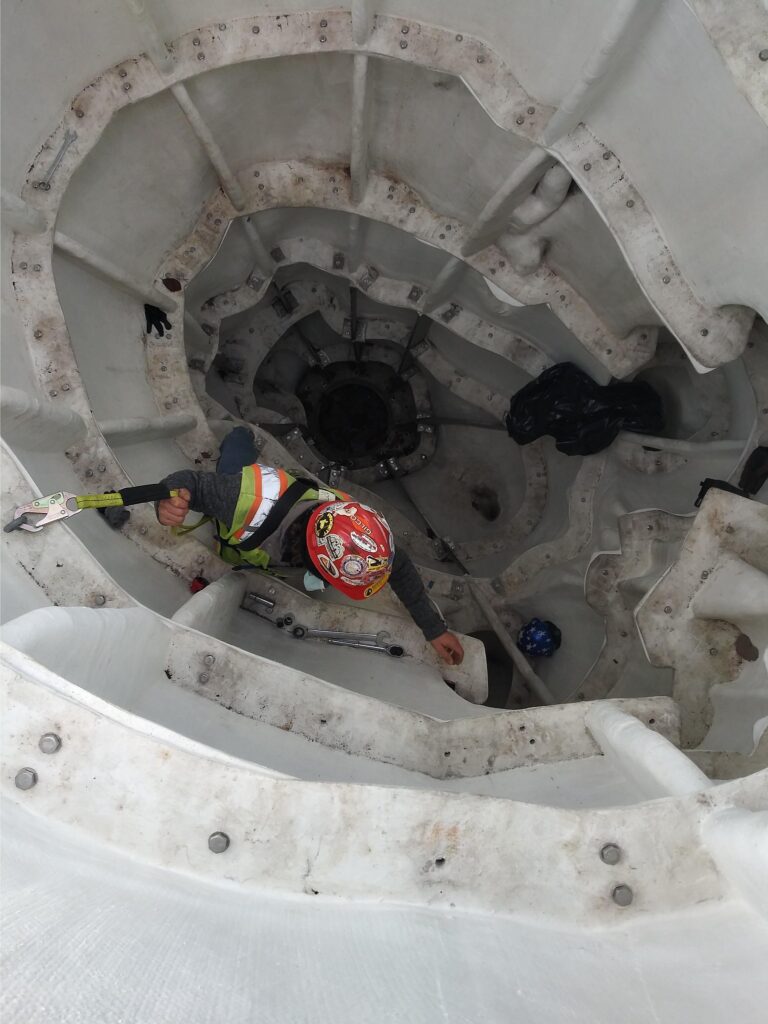
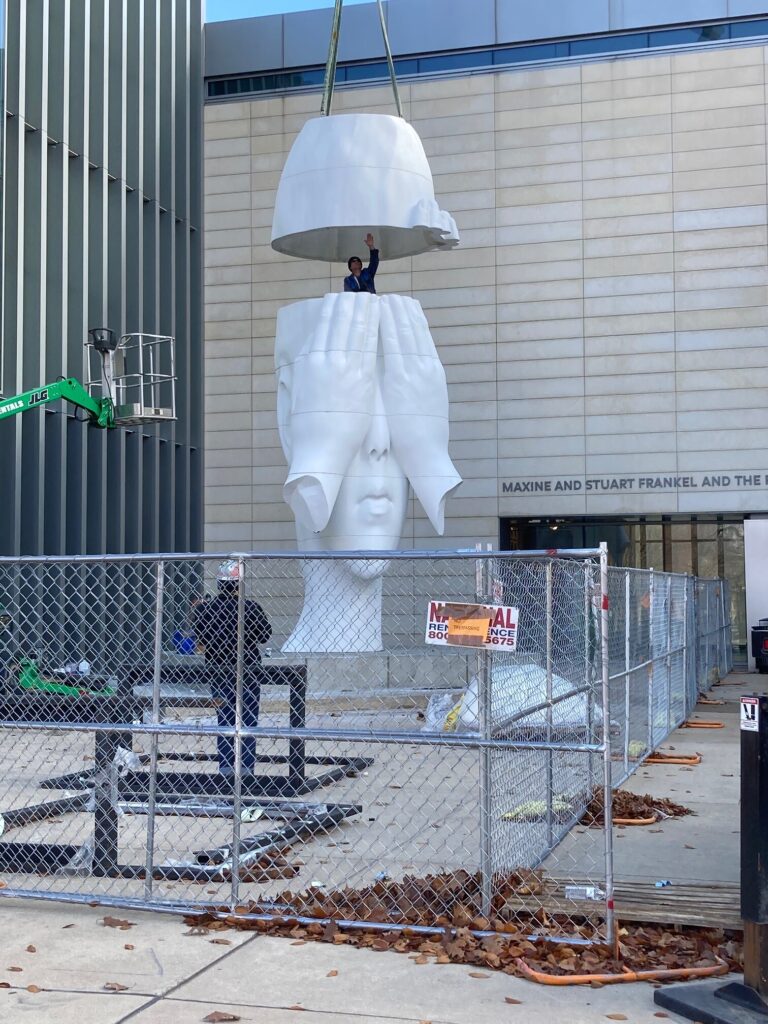
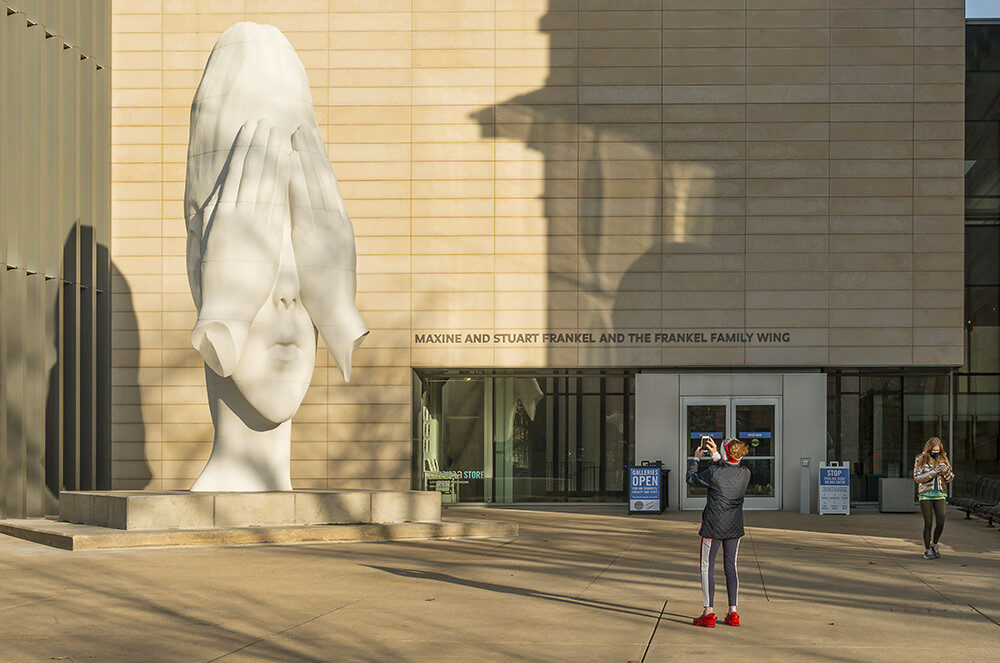
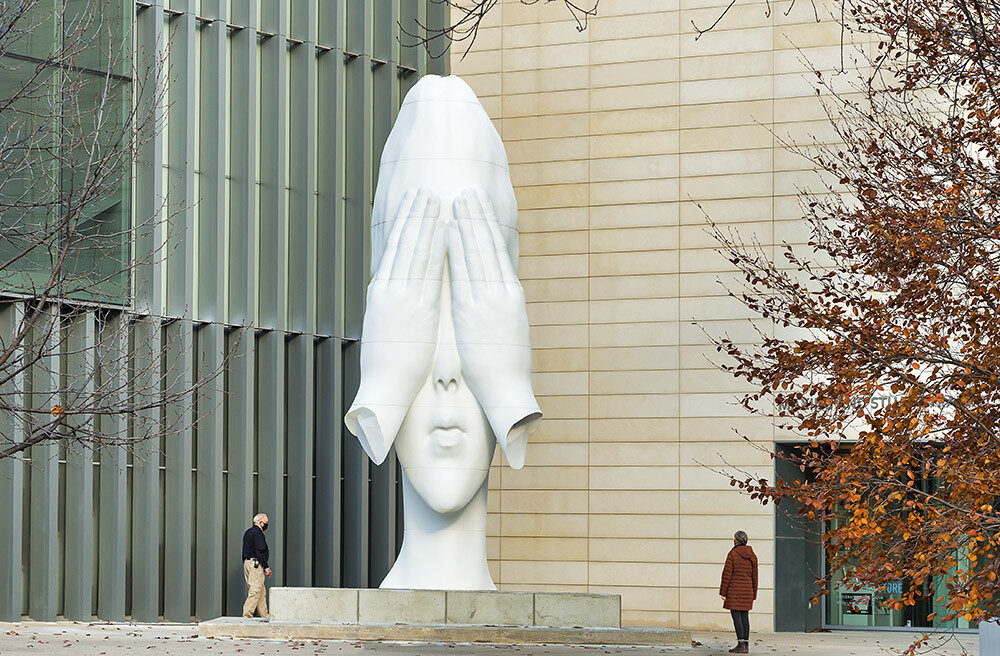
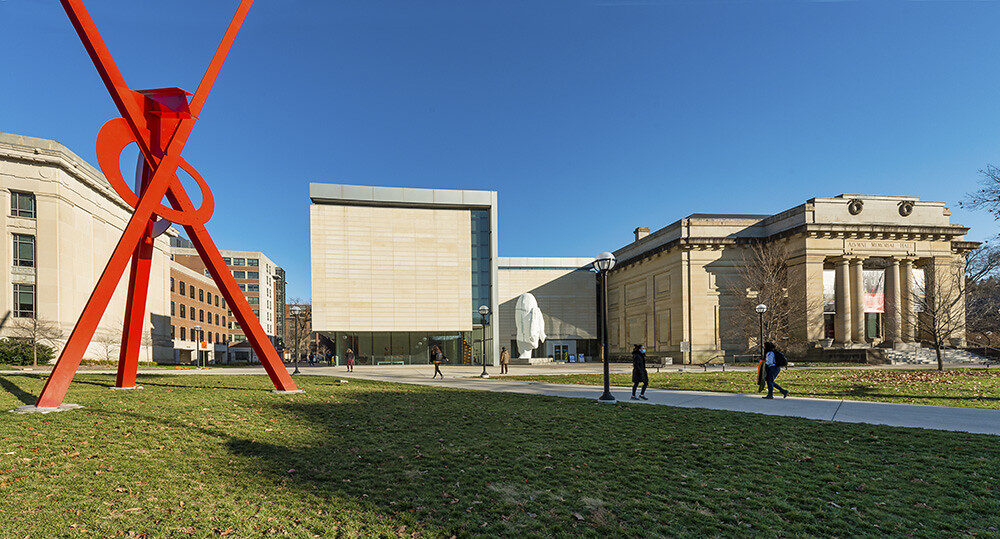

Frank Thompson - 1976
A perfect metaphor for the state of intellectual curiosity, tolerance, and freedom at the university of Michigan. Bravo!
Reply
Angela Bazzi - 2001
I agree!
Reply
C Biane - 1983
So in the same email you talk about “food insecurity” and a large ugly piece of art that probably cost a pretty penny to obtain and install. Perhaps the $$ from one could have gone instead to the other?! That thing looks like it came from the USSR. So glad I’m still NOT donating to the U
Reply
Deborah Holdship
The sculpture came by way of a gift to the University.
Reply
Nancy Hart - 1963
Interesting. Especially since this is the day that my granddaughter is being retrieved from campus by her family, due to Covid restrictions. She will not march with the band, or take classes in person. This sculpture seems to embody a reaction….
Reply
Raymond Rapaport - 1975
…so now you’re seeking two more donors for the hear-no-evil and speak-no-evil bookends to this thing?
I was a freshman and living in West Quad and when I discovered the joys of interacting with art firsthand as I spun the cube and then grabbed on for a gentle ride around, didn’t ever understand the art intended but enjoyed its presence in my life coming and going, and that all turned to a small town pride when I discovered the cube’s twin in Greenwich Village years later. But a giant face closing out the world with its hands? Are Frank ’76 and Angela ’01 serious that this thing actively shutting the world out, that’s representative of the U’s “intellectual curiosity, tolerance, and freedom?” It might be the truth, sadly that’s how things have been during recent times all over the US, but is that the message the U really thinks it should share about itself with visitors to the campus and impose on members of the U community spending all their working hours in close proximity while at least some of them are trying to do the best they can do with their time in Ann Arbor? Could the attitude of the closing off, shutting out, could that have brought Rostropovich to play at Hill Aud in 1975? Really?
Reply
Ethel Larsen - 1972
Interesting choice outside a museum of the VISUAL arts. Some depiction of curiosity or perception would seem more appropiate to me.
Reply
Alisande Cutler - 1960
Hands over its eyes? I think it should be renamed “2020”!
Reply
MaryEllen Vaydik - 1964
You beat me to it, Alisande.
Reply
Anon Ymous
It is interesting to see the comments posted by alumni who graduated from UofM long ago and raise concerns that I would see resonate very much with current students and faculty on campus. There is a whole issue about the meaning of this humongous sculpture, which probably cost a small fortune, and the meaning and relevance of museum art in general. Is it even ethical for this kind of donation to be considered by the university without some sort of mechanism by which part of the donation, or some type of cost sharing, would necessarily have to go to support people in dire need, including students who are facing food insecurity, or who may not be able to keep up with the cost of attending UofM if one or both their parents have lost their jobs or most of their wages for most of 2020 due to the pandemic?
Reply